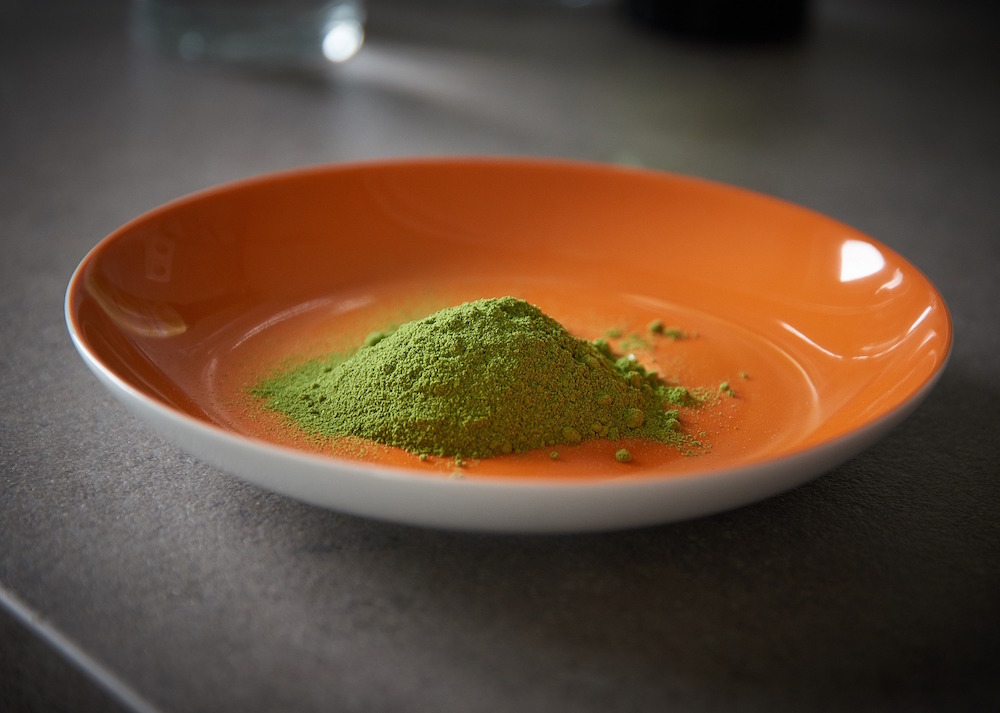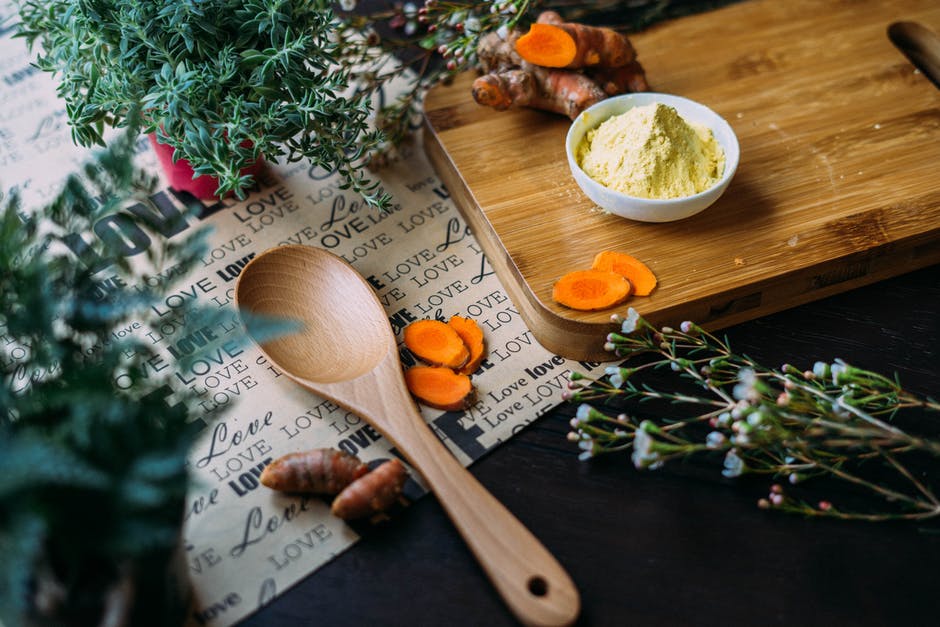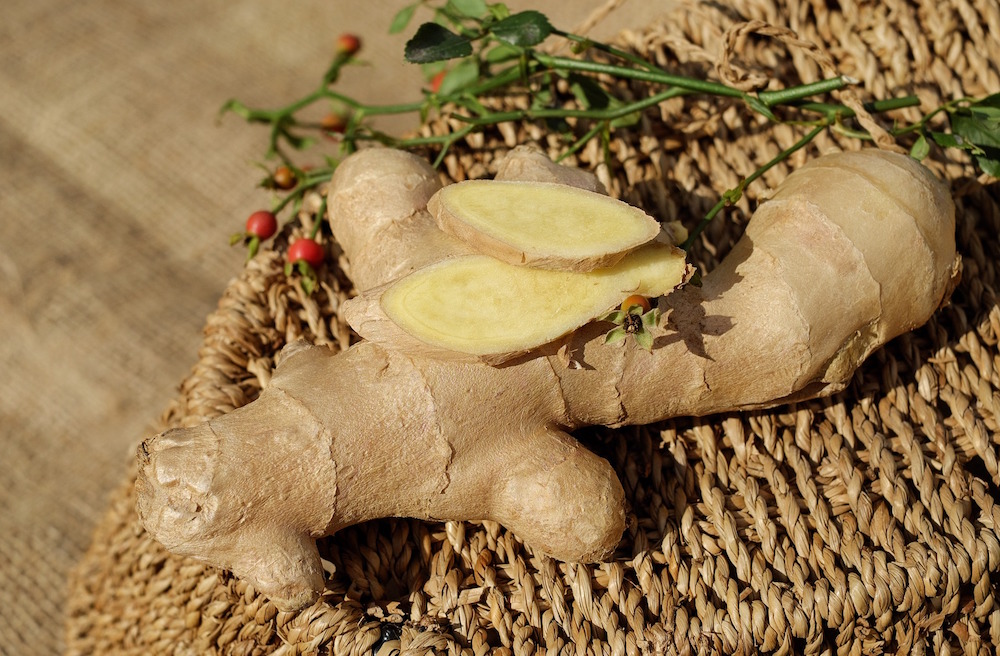KJ Callihan
White Sage Smudge: Clear out the Bad Humors With a White Sage Smudge

For many years, Native American traditions have included the use of sage and other herbs for ceremonies. Most often used for spiritual purification of the home or the clearing out of “bad vibes” or negative energy, burning sage sticks or sacred herbs, or “smudging”, as referred to by many, is very common among indigenous and religious/spiritual communities. To make a white sage smudge, white sage leaves must be dried and separated from seeds, buds and stems, then pulled and crushed into bundles or balls. Frequently bundled into thick, twine-bound “sticks,” use a white sage smudge by lighting one end of the stick, letting it burn for a moment, and then extinguishing the flame (it may occur without your help), allowing the smoke to continue to flow. The smudge stick can then be carried through the rooms and later placed onto any surface upon which it won’t burn, or extinguished by gently crushing out the smoldering end. Scientifically speaking, white sage or other sacred herbs are said to release negative ions when burned, which researchers have found contributes to a brighter mood.
White sage smudge
Mystics both modern and ancient instruct that the proper way to handle such sacred bundles is with the utmost care and respect, learning how to acknowledge and respect the Native American traditions as you go. Cat Criger, University of Toronto’s aboriginal elder-in-resident, explains that, “To understand the protocol means you have to learn something about the aboriginal people. So in a sense the medicines are working in a kind way, saying ‘learn about me and we can respect each other and we can walk together.” This means finding an honorable spot in your home for the storage of (preferably above waist level), and especially during the burning of the bundles. Criger advises purchasing birch baskets to place them in for storage. Leftover ashes should be treated with reverence, taken outside and left on the earth.
Smudging can be used not only to cleanse a space, but one’s self, one’s mind, spirit or even one’s body. One powerful cleansing technique involving the use of Native American white sage smudge (or other sacred herbs) is called the Sacred Smoke Bowl Blessing. This tradition is most often used for purifying newly purchased items (new homes or vehicles), your bedroom, a new dwelling space or work area before entering or working in the space, self-cleansing before doing a reading, starting meditation or going to sleep, or purifying a sacred object of some type. Although some Native Americans typically use the word “cleansing” to describe the technique, it can also be thought of as shifting the energy in the space from negative to peaceful or positive. The four basic elements (wind, water, fire and earth) will be represented in this blessing, as is common throughout Native American rituals or ceremonies. Specifically for the Sacred Smoke Blessing, users burn the smudge stick in a shell or small bowl, which represents the water, or a gift from the ocean. When users distribute the smoke, they will use a feather, considered a gift from the birds, our winged friends. The unlit sage or ashes afterward represent the earth, while the lit smudge stick represents fire.
Experts from the Ojibwa tribe direct users to prepare for smudging a space by closing the windows, covering the mirrors, opening doors and cupboards and powering off all electronics. Starting on the left side of the door, according to Ojibwa cultural educator Eddy Robinson, is preferred, as is continuing along the left as you move throughout the entire space while continuously praying. The intention here is to request for positive energy/spirits to remain while the negative energy/spirits leave the premises. To finish up, Robinson states, “When you get to the front, you shoot the smoke out the front door and then you wait a minute or two. Then you go outside and you put the ashes of the sage on the doorstep, and that is to protect the entrance. And then after that you put on a feast for the house.”
So, in general, before using white sage smudge or other sacred herbs, remember to have some type of ventilation — this is a must, as the smoke which carries away the negative energy must have a way to leave. The smudge pot or shell you select must be non-combustible, of course, and long wooden matches are ideal for lighting the sage bundle because lighters or candles are not commonly used for such ceremonies. Before smudging someone else or a space, always smudge yourself (swirling the lit smudge stick around your body and head, either blowing the smoke away or waving it off with a feather.) As you acknowledge the four elements, you should also acknowledge the four directions of north, south, east and west before you smudge, and then finish by crushing the smoldering end into a bowl or bit of sand.
Have you used a white sage smudge? Let us know your experience in the comments.
Moringa: The Many Miraculous Health Benefits of Moringa

Are you ready for optimal health? If so, then according to Mayo Clinic wellness dietitian Lisa Dierks, R.D., you need moringa in your life! Grown on large, tropical trees known as The Miracle Trees, (also known as Drumstick, Ben oil or Horse radish trees) in South Asia, West Africa, Central and South America, moringa oleifera has been used for centuries for the various medicinal properties found in its leaves, seeds, bark, sap and flowers (avoid the root, however – it’s potentially toxic). Rich in antioxidants, low in calories (only about 35 calories per tablespoon), and offering a full range of health benefits, moringa is most often and easily consumed in its powder form, which can be stirred into oatmeal, hummus, pancake batter and smoothies. It is also sold in capsules. Traditional Ayurvedic medicine names over 300 possible ailments which can be treated with some form of this miraculous plant. Referred to as “the new kale” by some, and known as a super-food by others, it’s not just the health food store crowd touting the wonders of this amazing plant – scientific proof exists to confirm its salubrious status too! Let’s take a look.
Benefits of Moringa
Moringa leaves and seed pods are the most frequently used parts of the plant, especially in India and Africa. The fresh, chopped leaves are well-known for their nutritional components, including being full of vitamin C (the leaves are said to be higher in vitamin C than an orange, containing 12% of the U.S. RDA, while 1 cup of fresh, sliced seed pods contain 157% RDA), protein (2 grams per cup or 3 grams per tablespoon in powdered form), calcium, iron, riboflavin, vitamin B6, vitamin A from beta-carotene, and magnesium.
Moringa has also been shown to have cholesterol-lowering effects, great for anyone struggling with high cholesterol levels in the blood. Animal studies have also shown success in reversing toxicity from exposure to arsenic, and newer research has revealed promise in potentially anti-cancer properties. It’s antifungal, antimicrobial and antibacterial properties have been well-documented in scientific papers, and it’s been noted to be effective in treating the effects of herpes simplex 1.
Additionally, a study in Phytotherapy Research found the plant can also help diabetics with blood sugar control and simultaneously lower blood pressure. The May 2008 issue of the Journal of Ethnopharmacology shared findings that leaf extracts also helped the body avoid plaque formation in blood vessels. The seed oil, among other benefits, has been used for hundreds of years to promote healthy hair and radiant skin, as its hydrating and detoxifying effects assist the body in neutralizing pollutants, preventing wrinkles, and slowing down premature aging. It can help the heart with its cardio-protective effects, and can also help with asthma and certain allergies. Moringa has been used in the treatment of wounds and the subsequent alleviation or prevention of scarring.
As if that’s not enough, moringa has also been known to have protective properties against neurodegenerative diseases , as its extracts potentially alter brain monoamines (such as dopamine, serotonin and/or norepinephrine), even possibly guarding against Alzheimers-related deficiencies. It can be used to promote good bone health as well, and is effective in treating arthritis.
Extracts are also proven to be helpful in the prevention of kidney, bladder and uterus stones due to their anti-urolithiatic and curative properties, as well as protectiveness against nephrotoxicity (issues with kidneys due to drug/toxin exposure) and bio-absorbent effects in removing heavy metals and other damaging toxins. Although it’s believed to reduce inflammation as well, the science on that has been fairly limited – so we’ll wait on the results of future studies.
Caution should be used due to moringa’s anti-fertility qualities, which include the estrogenic activity most notably attributed to its aqueous extracts in the prevention of uterine implantation and abortifacient action in women. (*PLEASE see note at bottom: some health professionals strongly advise that women of child-bearing years should not use moringa.)
There are downsides to moringa too, and, as with anything else, it must be taken in moderation. Ingesting too much can cause a stomach ache (be sure to follow package instructions if you purchased your it, which will likely tell you to limit powder form intake to one tablespoon at a time). Also, the leaves of the moringa tree contain a substantial amount of antinutrients, which act to reduce the body’s absorption of protein and minerals. In addition, if taken as a capsule supplement, the nutrient content will be notably decreased. It has also been rumoured to interact with prescription medication, as well as having infertility effects, with the bark potentially causing severe uterine contractions. *Some sites strongly advise this plant should not be taken by women during child-bearing years.
The Bountiful Benefits of Turmeric

For over 4,000 years, rich golden turmeric root has been valued and used extensively for its nutritive and medicinal properties. This prevalence has occurred especially due to its most useful component — the powerful antioxidant, curcumin. Turmeric, a relative of the ginger plant, is used widely in cooking (found frequently in mustard, as an integral element of of curry, and as color enhancement for butters and cheeses), as well as in traditional Chinese and Ayurvedic medicine. Studies have shown its likely efficacy (although some sources stress more research is needed) in fighting infection and some forms of cancer, as well as aiding with proper digestion, treating wounds and skin conditions, and reducing inflammation. Popular in the west over recent years, turmeric has shown up in the form of various teas, such as the rich and deliciously fragrant Golden Milk, as well as numerous other flavorful drinks and dishes. Turmeric’s lovely bright yellow color is attractive to most, but be forewarned: if you plan to use it, you may want to wear gloves. Its been known to stain fingers, and pretty much everything else it touches!
In addition to the above-mentioned health benefits, turmeric has other nutritional strengths — along with the accompanying science to back them up! It rates high on manganese content, for starters (we need that for wound healing), with each tablespoon providing over 100% of a woman’s RDA and over 80% of a man’s at 1.0 milligrams. It’s an optimal iron source too (needed for red blood cells to provide healthy oxygen transport throughout the body, and also generating energy), since over 65% of a man’s and 30% of a woman’s daily iron needs are met easily by a single tablespoon at a whopping 5.2 milligrams. On top of that, turmeric has been known to assist with the prolonged remission of ulcerative colitis, as an element of an Ayurvedic formula used to relieve pain, and as an age-old skin ailment remedy which has even been used inside the mouth for gum disease.
What’s more, there’s rumored to be brain-boosting, heart-protective, diabetes-fighting and possible arthritis-busting properties present in turmeric! Due to its curcumin content (curcumin is the most common and important of the curcuminoids), its health benefits and yellow color gain popularity. When combined with other ingredients, its absorption capabilities are enhanced nutritionally. For example, when mixed with black pepper (which contains piperine, which is also called bioperine), the effects of and absorption rate of turmeric is greatly improved (enhanced by 2000%, to be exact).
In regard to inflammation, studies have suggested that curcumin is remarkably powerful, matching the potency of some anti-inflammatory medications. One source explains that, on the molecular level, curcumin is bioactive, apparently blocking areas that “turn on” the genes for inflammation (while inflammation can be a good thing, prolonged inflammation is the targeted issue.) The root seems to work the same way with the development, growth and spread of cancer.
When studied for its effects against depression, turmeric found another way to wow us. A six week controlled trial measured curcumin against prozac among 3 groups of adults (one group took prozac only, the second took curcumin only, and the third took both substances together.) The study revealed the best results were experienced by the third group — the adults who took both prozac and curcumin together. Scientists explain that since depression has links to possible brain issues like a shrunken hippocampus (associated with learning and memory) or a low/imbalanced neurotransmission levels, turmeric can potentially target and reverse these.
Other uses for the golden ground root have included its being mixed with aloe vera into a paste for skin maladies like eczema or poison ivy. Teeth whitening aids, acne gels, and poultice preparations for pain, blisters, boils, or insect bites also rank high among its uses as a natural remedy.
Last but certainly not least comes turmeric’s potential connection to increased longevity. In the endless human battle against the inevitability of eventual death, turmeric stands up as a prevention of some leading killers like cancer and heart disease, as well as the development of neurological issues like Alzheimer’s. The science on it seems to say that because inflammation and oxidation appear to lead us into certain aspects of aging, curcumin’s targeting of those aspects may have the secondary effect of prolonging life in general. Any way you look at it, this amazing root has countless benefits and seemingly very little downside (aside from maybe a few yellow fingers after handling it!) Get some into your life today!
How to Make Ginger Tea From Fresh Ginger

Having trouble waking up, staying motivated, or feeling a bit under the weather? Peel and grate up some fresh ginger root, pull it close, and inhale. That’s right, today we’re going to learn how to make ginger tea. It’s hard to find a more aromatic, versatile or beneficial root than this! The health benefits of ginger are numerous, according to The Ginger People, including study-proven fat-fighting capabilities, anti-cancer properties, and immunity-boosting prowess, as well as digestion-promoting, antioxidant-bursting, metabolism-boosting, detoxifying, muscle ache-reducing (including menstrual cramps) and nausea-alleviating (including morning sickness)! Commonly found in Indian and Asian cuisine, as well as grated, ground, pickled, candied and dried into countless other dishes worldwide, you can’t go wrong incorporating ginger into your recipe – especially if you’re making tea! You can make either hot or cold ginger tea using this enticingly fragrant ingredient, so be sure to enjoy it regardless of season.
When you’re ready to choose your fresh ginger, go for a high quality root with smooth, white skin. Then pay close attention to your recipe’s preparation guidelines to find out whether you need to grate, crush or slice your ginger, and then boil it, steep it or sprinkle it on top of your beverage. Most of our favorite ginger tea recipes call for fresh ginger root for obvious reasons, but some may allow for ground or pre-packaged ginger if you find yourself in a pinch – just know that fresh is usually best (and growing your own is even better than best) and go from there!
How to Make Ginger Tea
The simplest way to make fresh ginger tea is to boil up about 1/2 cup grated or chopped fresh ginger root with a few teaspoons of honey to taste in around 4 -5 cups of water. After straining the root pieces out, you can enjoy this tea over ice (for cold) or in a mug or teacup (for hot.)
For tea-making in the summertime, sun tea is undoubtedly the most easily-made type you can create by using the direct sunlight of the day as it hits your porch or window sill – and ginger sun tea is no different. This recipe uses fresh mint in addition to chopped fresh ginger and you’ll also need a large jar and a few of your favorite tea bags tossed in for good measure. Several hours later, you’ll have naturally steeped fresh ginger tea ready for your tall glass of ice! If you like additional spices added to your tea, Vegan Richa kicks things up a notch with her Cardamom-Cinnamon-Turmeric Iced Tea, not to be outdone in either flavor or health benefits.
If you want to know how to make ginger tea hot, that’s no trouble at all either. The step-by-step method of making fresh ginger tea with the Vegan American Princess is here, with a video at the bottom to boot. Play around with your ingredients if you like a little variation in flavor to your tea. While the Princess used some lemon, this delightful concoction introduces assorted other citrus slices, so you could add a variety according to your own tastes. If you need help to get things rolling on a dreary morning, start off with this Morning Tonic – you’ll be in the shower and out the door in no time! When you’re ready for something a little more exotic, the First Timer Cook throws in a pinch of basil and some other items known to help promote weight loss also. And for those who enjoy a bit of turmeric, this basic Golden Milk recipe should do the trick as well.
If you find you’re craving a traditional chai, skip the Starbuck’s and make it yourself at home! This recipe calls for ground ginger, so you can use that if you have it on hand or substitute the same amount or slightly less of the grated fresh kind. You won’t be disappointed! Once you’ve mastered the simplest traditional chai, give this version a try – Lemongrass Ginger Chai combines black tea with fresh ginger and lemongrass stalks to make an invigorating blend in your cup. Don’t miss it! And finally, for those who wish to venture off into non-tea areas, you could also try this delectable 3-Ingredient Ginger Latte recipe from the Minimalist Baker. You’ll need a whole cup of fresh ginger pieces for this deliciousness, so make sure you grab enough at the store – and have a perfect spot in mind for sitting while you sip this tasty treat slowly and mindfully.
Do you have any tips on how to make ginger tea?
